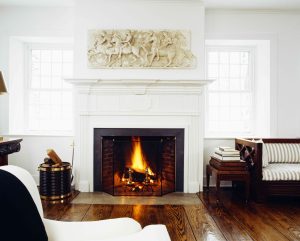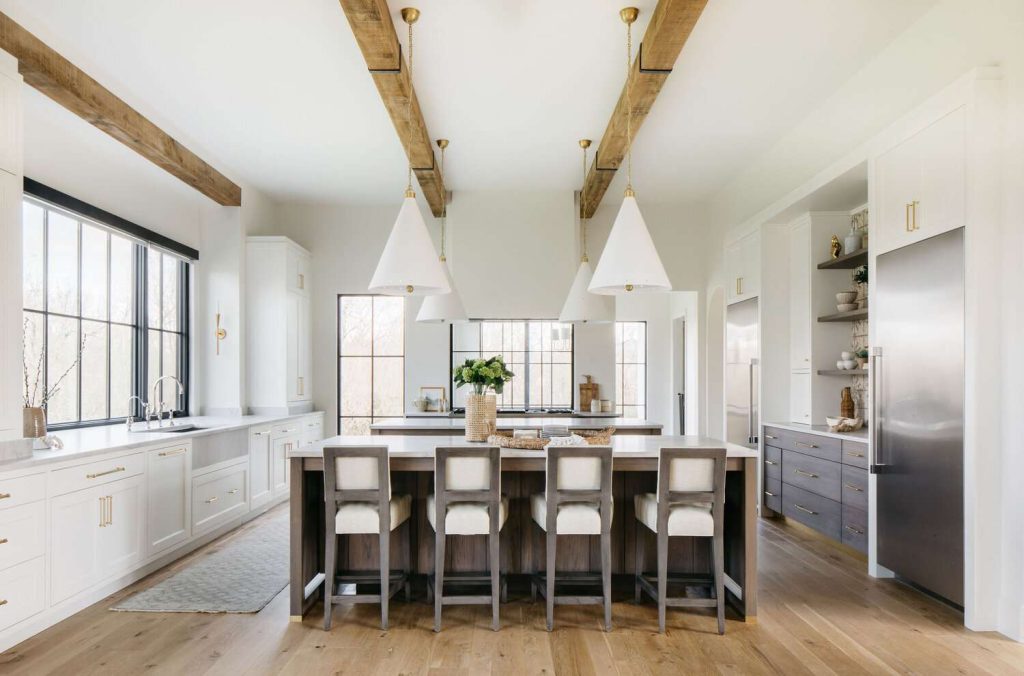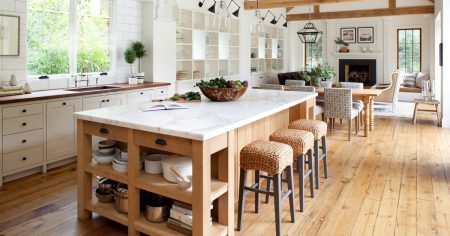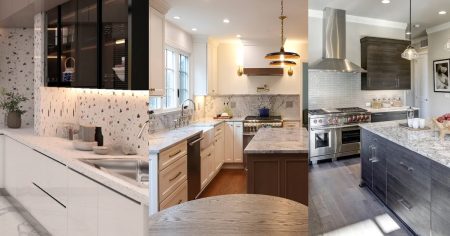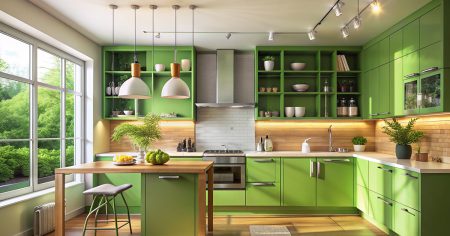The layout of your kitchen is as much a practical decision as a design choice. Partly defined by personal preference, it will be largely determined by the bones of your space, your lifestyle, and whether you use your kitchen to warm up takeout in the microwave, or as a workspace to prepare daily meals.
While there is no set number of kitchen layouts, there is a handful of basic configurations that can each be tweaked and adapted according to your needs, budget, and the constraints of your space. Below is an overview of some of the most common kitchen layouts—including potential pros and cons for each—to help you plan your renovation or remodel.
Open Plan
The open-plan kitchen is less a defined layout than a style of kitchen located within a larger living space, rather than a dedicated room that is closed off by walls and a door. The open plan kitchen has been the flavor of the month in U.S. home renovation for years. Where once kitchens were designed so that the person doing the cooking was hidden from sight, today many people want an integrated living space and consider the kitchen the heart of the home. While open plan kitchens are considered a modern trend that began in the 1960s with the domestication of urban lofts, in fact, they share DNA with the rustic open-plan farmhouse kitchens of centuries past where people gathered around the fire in one big shared room. And they can look just as timeless when outfitted with traditional fittings and fixtures rather than the usual go-to kitchen islands of the moment.
An open-plan kitchen has social advantages, allowing parents to keep an eye on children, spouses to mingle, and guests to hang out while you prep meals. While we tend to think of open plan kitchens in spacious urban lofts and sprawling suburban homes, the open plan kitchen layout can be adapted everywhere from studio apartments to family homes.
Open plan kitchens may be set up along one wall with a central island floating in front, or include a peninsula if space is more limited. An open plan kitchen may be L-shaped if situated in the corner of a room, or U-shaped, with cabinetry and/or appliances on three sides.
A well-designed open plan kitchen promotes flow and natural light, but the lack of walls has built-in drawbacks to consider. Even with proper ventilation, cooking odors can permeate the rest of the living space. Noise from handling pots and pans and putting away dishes and other kitchen chores can be amplified in an open room. An open kitchen requires you to have the discipline to clean as you cook and to put things away, since untreated kitchen mess will be visible and can’t be hidden behind a closed door.
One Wall
Lining kitchen appliances, countertops, sinks, and cabinetry along one wall is a common move in a range of kitchen layout scenarios, from an open plan loft kitchen to a studio apartment kitchenette. An open kitchen occupying the back wall of a space with a large central island floating in front of it is one example of a one wall kitchen design.
But from a chef’s perspective, a one-wall configuration is one of the least effective working layouts for a kitchen, especially in a larger space where you have to take more steps to get from point A to B. If designing a one-wall kitchen, be conscious of grouping appliances in a way that facilitates basic functions around the oven, sink, and fridge, otherwise known as the kitchen triangle.
Galley Style
A galley kitchen is a long and narrow kitchen configuration with a central walkway. It can include cabinetry, countertops, and appliances built along one wall, or a double galley configuration where those elements are lined up on opposite walls. A self-contained galley kitchen often features a window and sometimes a glass door at the far end to let in natural light. Or it may be situated in a pass-through corridor or serve as a bridge between rooms with cased openings at both ends.
Galley kitchens are practical solutions in small spaces and are often found in urban apartments, particularly in older buildings. But you can also find galley kitchens in historic houses that have kept their original floor plans and in homes that prioritize living space. They might feel old-fashioned to people used to open plan kitchens, but some people prefer to keep the kitchen separate and self-contained. A galley kitchen can feel cramped and claustrophobic, and make cooking with others challenging due to its long and narrow shape.
U-Shaped
The U-shaped kitchen is common in large spaces that can accommodate built-in cabinetry, countertops, and appliances on three sides. The fourth side is commonly left open for maximum circulation or may include a door in a smaller U-shaped kitchen. In larger spaces, U-shaped kitchens are often outfitted with a freestanding island. In smaller spaces, a peninsula may be attached to one side to provide seating and extra counter space while leaving a clearing for moving in and out of the kitchen.
Possible disadvantages to a U-shaped kitchen layout include the fact that you will need a wide and large space in order to accommodate an island or seating area. Without a proper layout and a good deal of closed storage, a U-shaped kitchen can feel cluttered.
L-Shaped
An L-shaped kitchen layout is suited for corner kitchens in open plan spaces from studio apartments to larger spaces. With appliances, countertops, and cabinetry lined up on adjoining walls, the L-shaped kitchen is convenient for cooking. Having two sides open gives you plenty of options for adding a kitchen island or a table in a larger space, and keeps the design feeling open and airy in a smaller space.
Read the full article here


